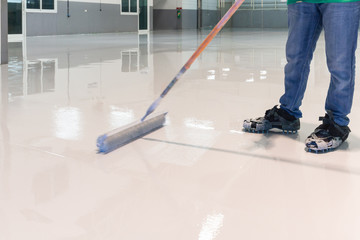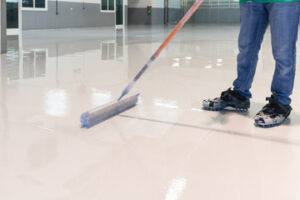Link Juice is the value that one link passes to another. This can happen externally when a prominent site links to your content or internally within your own pages.
You can improve your Link Juice by interlinking your web pages. This will make it easier for search engines to crawl your entire website and rank its individual pages.
Getting high-quality backlinks is an important aspect of link juice. The more quality backlinks a website has, the higher its PageRank will be. A good way to improve your link juice is to target pages with high Domain Authority and use high-quality anchor text. However, you must remember that not all links pass the same amount of PageRank, so it is important to select your anchor texts carefully.
Link Juice is a page’s value passed to other pages via hyperlinks. Ideally, the links should be high-quality and relevant. They should also have a low number of outbound links since this will increase your PageRank. High-quality links are more likely to generate more PageRank than low-quality links, so it’s best to focus on creating these types of links.
The content on your website is another factor that can help you improve your PageRank. The key is to publish content that is educational, worthwhile, and captivating. This will make people want to link to it and share it with others. If you’re not able to produce high-quality content, consider hiring a digital marketing agency that specializes in SEO and PPC services.
One of the biggest mistakes that marketers make is overlooking their own sites as a source of link juice. Often, there are pools of link juice concentrated on your most popular pages that are just waiting to be tapped through internal linking. You can also build valuable links by creating infographics, GIFographics, and “Map-o-graphics” that are useful to other websites and pitch them to them.
The more reputable the site that is providing the backlink, the more PageRank it will pass to your page. This is because Google takes into account the amount of quality backlinks that a page has, as well as its own PageRank. In addition, the more unique the content of a page is, the better it will rank. This is because Google gives more weight to unique content than duplicate content. It also takes into account the time that the page has been live. In general, a newer page will rank lower than an older one.
Relevant content
The content of a page is a major factor when it comes to the amount of link juice it passes to other pages. When the content is relevant to the topic, it has a higher chance of being clicked and shared, which increases its chances of getting more links from other sites. This will, in turn, lead to better search engine rankings.
It is important to note that not all websites are created equal, and the quality of a website is also an important factor when determining the amount of Link Juice it has. If a site has low-quality content, it will be hard to rank well in search engines. Fortunately, there are ways to improve the content on your website, including adding keyword-rich text and using natural language.
Another way to increase Link Juice is by creating and marketing useful resources that other sites will want to link to. For example, infographics, GIFographics and Map-o-graphics can be extremely effective in generating backlinks. However, these techniques take time and effort to develop and promote.
A good way to understand how Link Juice works is to imagine a river with various branches. The homepage of a website has the most Link Juice, and it passes this link juice to other pages within the site. This is because the homepage has more authority than the other pages. However, it is important to remember that each link has its own value. Moreover, the relevance of the linked page is also an important factor in determining the amount of Link Juice it will pass.
Many pages contain multiple links that point to other websites, and these links are known as a “silo.” This method of linking is used by SEO’s to maximize the amount of Link Juice that they can transfer to their own web pages. There are a number of different tactics for doing this, and the effectiveness of these strategies varies.
Whenever possible, it is important to create links from high-authority websites and to avoid using spammy methods such as doorway pages. In addition, it is important to use HTTPS for all internal and external links. It is also important to check if the link is still live and functional. If the page is down or not redirecting properly, it will cause a 404 error and waste the PageRank that would otherwise have been transferred to the other site.
Anchor text
Anchor text is a crucial element of Link Juice, and there are many different ways to improve it. The most important thing is to make sure that your anchor text is relevant to the content you are linking to. Otherwise, you risk misleading your visitors and violating Google’s anti-spam policies. You can also use a tool such as Site Audit to keep track of your anchor text and make sure you’re following best practices.
The first step to improving your anchor text is to determine what keywords are most important for your business. This will help you determine which pages are getting the most traffic and where your competitors are ranking. Once you have this information, you can create a keyword strategy that will improve your ranking. Then, you can use this strategy on your own website to increase your Page Rank.
Another important element of your Link Juice is the quality of the content you are linking to. A poor-quality article can ruin your SEO efforts, even if you have great links and keyword-rich content. Therefore, you should only link to articles that are related to your topic.
You should also be careful when using the same anchor text for multiple articles. Doing so can look spammy to search engines and will damage your credibility. Instead, try to mix it up by using synonyms or LSI keywords. This will prevent your articles from looking spammy and will also provide a better user experience for visitors.
Lastly, it’s important to use the right anchor text for internal links. When possible, you should use the same keywords as your target keyword in the anchor text. However, you should not use exact-match keywords unless they are the most popular in your industry. This will confuse search engines and could lead to a negative penalty.
A good anchor text will include the keyword, a question mark, or a hyphen. It will also include the URL of the page to which it is linked. This helps Google understand what the page is about. However, you should avoid repetitive “this page” and “read this here” anchor text. This type of anchor text is not user-friendly and can reduce your click-through rate.
Authority
When it comes to SEO, the amount of link juice is one of the most important factors. Essentially, link juice is the amount of authority that passes through a page via links. If a page has more link juice, it will rank higher in search engine results pages (SERPs). Link juice can be generated by various methods, including guest blogging, link exchanges, and paid advertising. However, the most effective way to build link juice is by creating high-quality content that attracts visitors.
Until recently, a page’s link juice could be measured by its PageRank. Since Google stopped publishing PageRank, various tools have been developed to measure PageRank, but none are completely accurate. The most accurate tool is the Moz toolbar, which calculates a page’s SEO ranking and provides other useful information as well.
The more quality backlinks a page has, the more link juice it will pass to other pages. However, it’s important to remember that not all backlinks are created equal. The most valuable backlinks are those that come from authoritative sources, such as.gov and.edu domains. These links tend to pass more juice than other types of links, as they are viewed as more trustworthy by search engines.
Another factor that determines how much link juice a page has is its number of internal links. A page with fewer internal links will have more link juice than a page with many internal links. This is because the link juice will be spread out among all the links on a page, making it less likely that any of them will receive the full benefit of the PageRank boost.
Many marketers and website owners overlook pools of link juice that already exist on their site. While it’s important to focus on building new links, it’s also crucial to consider how the existing ones will pass link juice to other pages within your site. To maximize the effectiveness of your internal linking, start by conducting keyword research and identifying relevant keywords and LSI keywords. You should then prioritize promoting these keywords throughout your content. Finally, make sure to use the nofollow attribute for internal links that don’t need the PR of your page. This will prevent unintentional waste of Link Juice and will help you optimize your internal linking strategy.



